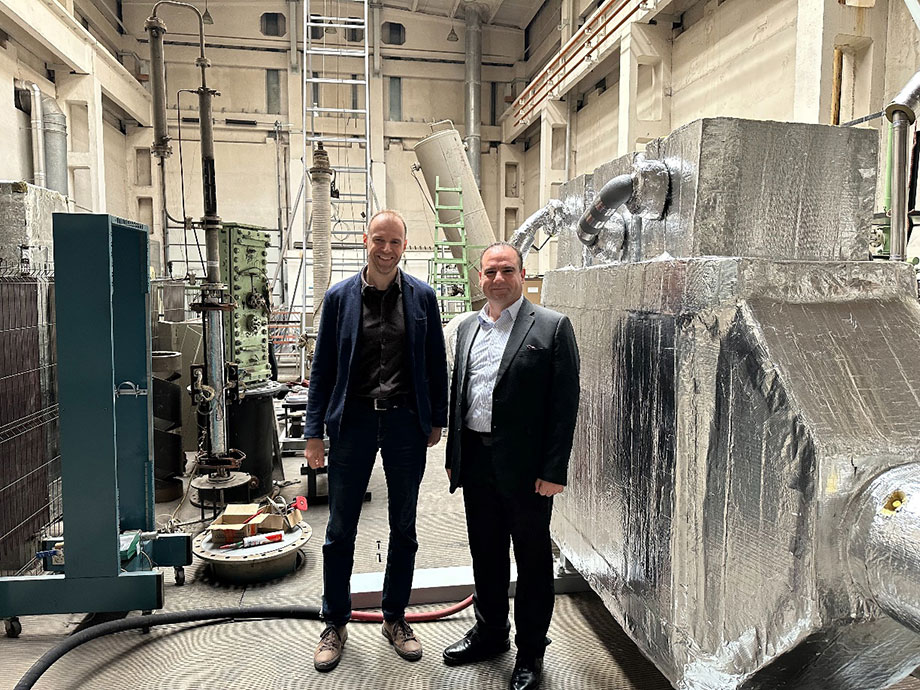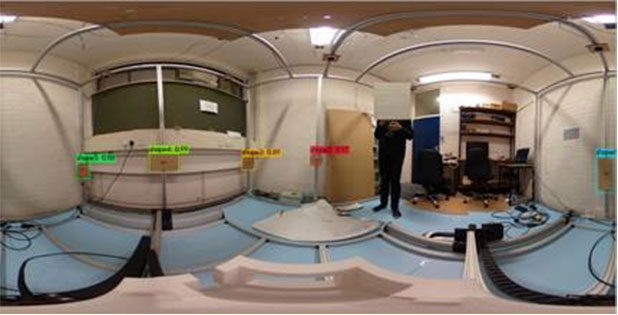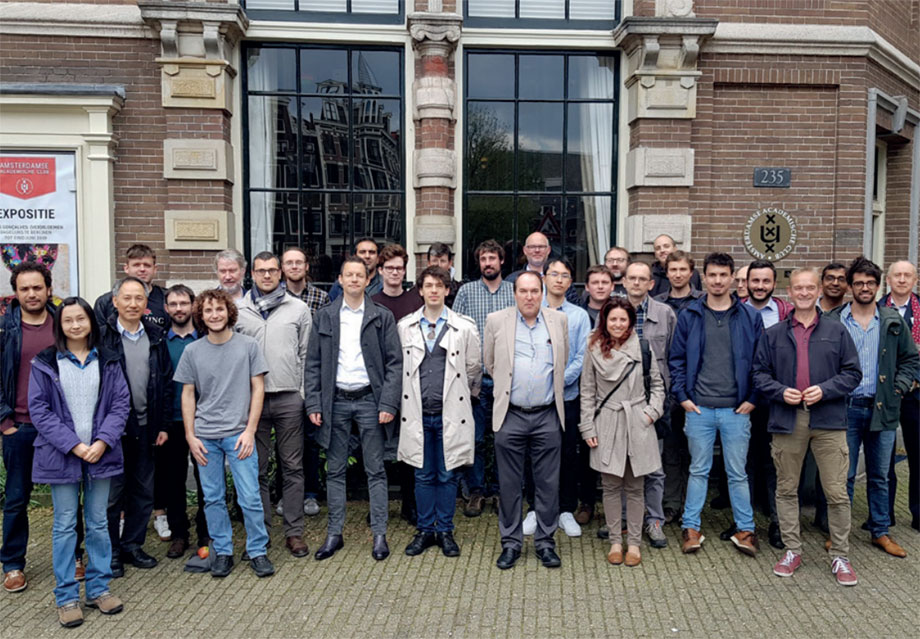Four projects involving Brunel University London researchers are continuing to provide technological and scientific advances and have been recognised by the European Commission’s Innovation Radar initiative, which identifies high-potential innovations and key innovators in EU-funded research and innovation projects.
The projects were funded by the EU’s Horizon 2020 Research and Innovation programme, which invested billions in Europe’s finest researchers and innovators. The global technology companies Skype and TomTom both received EU funding in their early days, and many Horizon 2020 supported projects have delivered major advances in technology and science.
Dig_IT
The Dig_IT project, led by computer science expert Prof Zidong Wang, is addressing the needs of the mining industry to move towards a more human-centered, sustainable and environmentally-oriented industry. Keeping people and the environment at the forefront are their key priorities.
By connecting cyber and physical systems, Prof Wang and his team have developed an Internet of Things (IoT) platform. The IoT software enables objects and technology, such as heating systems, to be controlled remotely. The software will improve the efficiency and sustainability of mining operations, connecting cyber and physical systems for data to be collected from sensors.

“Our core contribution is designing an early warning system framework that alerts mining operators before a slope failure disaster happens. A failure would greatly impact the overall mining operation, such as losses of mining machinery, a production halt and could even cause deaths,” said Prof Wang.
“This smart apparatus will use a scalable, flexible and reliable messaging protocol to ensure an easy information flow between the internet of things platform, sensors and the output of the data models.”
iWAYS
Expert engineer Prof Hussam Jouhara is the technical director for the iWAYS project. Alongside his team of engineers, Prof Jouhara has been working on a water treatment system that helps factories recycle waste water and recover heat.
The project has developed an innovative heat pipe condensing economiser – HPCE – to recover heat, water and other materials that would otherwise be treated as waste.
The technology helps companies save significant amounts of the water that they use in their industrial processes and also helps to recover much of the heat they generate. This ultimately strengthens their brand’s sustainability and increases their profitability.
The iWAYS technology is also helping other countries struggling with water resources, especially developing countries.

Prof Jouhara with his iWAYS partner, Dr Robertas Poškas, at the Lithuanian Energy Institute, standing next to the first HPCE demo of the iWAYS project
“Faced with climate change and the war in Ukraine, it is important that we use our resources wisely and efficiently and are able to make industry more sustainable, competitive and profitable,” said Prof Jouhara.
“Our technology is quite flexible and has been applied to a diverse range of industries, including the ceramic, chemical and steel tube industries. We are also heavily involved in the food industry, the forestry industry and the paper industry, which indicates that it is basically applicable everywhere.
“All these industries consume fuels, create emissions and waste water. We have even put a system in a church. By putting a heat exchanger at the back of the generator, we can recover heat that is used to help heat the vast spaces within the church and save gas.
“Our ambition is to contribute to a future where industry is sustainable and green. This will require advances in several fields. Each one of these innovations will benefit not only European industry but also society.”
6G BRAINS
Before the global roll-out of the 5G connectivity network has even been completed, Prof John Cosmas, an expert in multimedia design and 3D technologies, already has his sights set on 6G. Prof Cosmas is the deputy technical manager on the 6G BRAINS project, which is working on sixth-generation wireless communications technologies, known as 6G.
The project is responding to the explosive growth in demand for high-performance connectivity and is incorporating artificial intelligence to develop the network. Static and permanent physical adaptations in network infrastructure can only get us so far, and the project sees the value in an AI-driven self-learning platform.
The developed technologies will be widely applicable to various sectors, such as Industry 4.0, which is the ‘fourth industrial revolution’ incorporating artificial intelligence. This will be used in intelligent transportation to improve the quality of transport as well as in healthcare. 6G BRAINS is also identifying new business opportunities.

A lab at Brunel, where the research is taking place
“My research team and I have constructed a fifth-generation non-public communication network and are working on the sixth-generation network. We are using the 5G network to measure the location of user equipment to sub-centimetre accuracy using time difference of arrival,” said Prof Cosmas.
“The true position of the user equipment is obtained with sub-millimetre accuracy using location from landmarks with laser imaging, detection and ranging, known as LIDAR.
“The project has been championed by Nokia Research Labs, who named it among the best research on 6G networks, within the Horizon 2020 research programme.
“What we imagine now usually takes 20 to 30 years to become a common reality for society. In 1980, I remember reading with amazement a prediction that we would all be able to answer the phone and watch TV on the beach. Around 2010, it became a common reality.”
VECMA
Another Brunel research project on the Horizon 2020 programme was VECMA, which stands for Verified Exascale Computing for Multiscale Applications. Exascale computing allows scientists to use powerful hardware to model more realistic Earth systems, such as land, water, air and living things.
These computer simulations are being used to predict the weather, inform medical decisions and understand materials. Globally, they are also helping to predict climate change and to support migrants fleeing combat.
Computer scientist Dr Derek Groen was the principal investigator and technical manager on the project, which became the catalyst for further projects.
Dr Groen and his team have used advanced high-performance computing to model and simulate patterns of human migration as refugees flee conflicts.

Some of the VECMA team
Based on the project’s publicly available refugee and conflict data, these simulations can help governments allocate humanitarian resources better to improve the lives of those in need.
With regards to healthcare, the simulations allow doctors to test medication on a virtual person, before prescribing it to the real patient.
“As a project, VECMA was a major success, as its accompanying toolkit was used by collaborators around the world to make their simulations more robust, and their results more actionable. For example, the Brunel-based FabSim3 toolkit was used to support COVID-19 forecasts for Hillingdon Hospitals, and it was also used to make migration forecasts more reliable in collaboration with Save the Children UK,” said Dr Groen.
“VECMA got followed up by the UK SEAVEA project, and the SEAVEA toolkit is now used across the world for modelling applications in areas such as materials, biomedicine, migration, epidemiology and climate.”
Reported by:
Nadine Palmer,
Media Relations
+44 (0)1895 267090
nadine.palmer@brunel.ac.uk